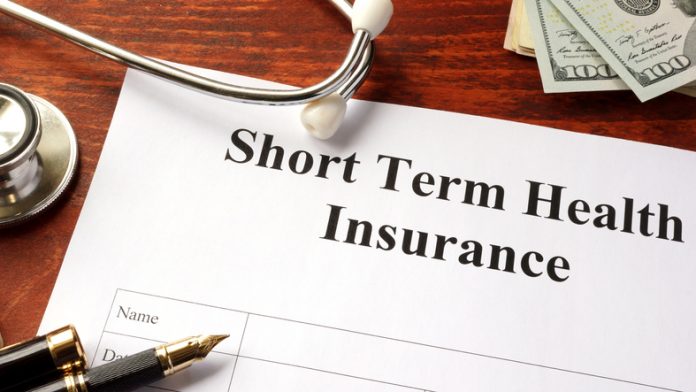Democrat Senators are urging the U.S. Department of Health and Human Services (HHS) to move quickly to restrict Short Term Limited Duration Insurance (STLDI) plans.
STLDI plans “sow confusion and cause harm to patients,” wrote Sens. Tammy Baldwin (D -WS), Michael Murphy (D-CT), and Jeanne Shaheen (D-NH) in a letter to HHS Secretary Xavier Becerra on February 14. The letter was signed by 37 of their Democrat colleagues and independents Sens. Angus King (ME) and Bernie Sanders (VT).
‘Undo the Sabotage’
A record 14.5 million Americans signed up for Obamacare plans during the most recent Open Enrollment period but could be misled to choose STLDI plans, say the senators.
“STLDI plans undermine the integrity of the ACA (Affordable Care Act) and put those with pre-existing conditions at risk,” wrote the senators. “HHS must act quickly to limit the proliferation and promotion of STLDI plans, and undo the sabotage caused by the previous administration.”
Specifically, the senators want to restrict the plans to a three-month duration period with no option to renew them after they expire. They want to eliminate the chance to immediately buy a different STLDI plan after one expires. They also want to ban sales of STLDI plans during the ACA open enrollment period, limit their sales online and by phone, prohibit retroactive coverage rescissions, and require insurers to disclose more details on the plans.
‘Coverage They Value’
STLDI, sometimes called “plans for healthy people,” allows consumers to bridge gaps in health insurance coverage. Premiums are lower than for ACA plans because STLDI are not subject to the coverage requirements of Obamacare. Consumers buy them to protect themselves against a catastrophic health event and they can purchase them easily, often online.
STLDI plans became more accessible after the Trump administration increased their duration to 12 months and allowed them to be renewed three times for a total coverage period of 36 months, says Brian Blase, founder, and president of the Paragon Health Institute, who served as an economic advisor in the Trump White House.
“The Trump administration’s actions increased consumer options and consumer protections as people could keep the coverage longer, without having to go through health underwriting,” said Blase.
The plans offer another benefit, says Blase.
“Short-term plans allow people to buy coverage they value,” said Blase. “People do not qualify for government subsidies if they purchase short-term plans, so we know that they only purchase them if they receive value. This is very different from ACA plans, where the government typically pays 80 percent or more of the premium. If HHS restricts short-term plans, more people will be uninsured, and the market will even further tilt in the direction of government control than consumer choice.”
Kansas State Senator Beverly Gossage, who is the president of the firm, HSA Benefits Consulting, says it would be a mistake to restrict an option for people who don’t have an employer plan and find Obamacare plans unaffordable.
“This is a small subset of the population. For example, fewer than 1,800 Kansans have an STLDI, but without these plans, many of them would be forced to go uninsured,” said Gossage. “These buyers are informed at application that most of these plans do not cover pre-existing conditions, but they are often less than 50 percent less than [the cost] of ACA (Affordable Care Act) plans and do cover new standard medical claims after a deductible, reducing an eligible buyer’s risk for bankruptcy due to medical bills.”
‘Price They Can Afford’
Uninsured Americans were initially required to buy ACA plans, which have lots of benefits and high premiums, says John Goodman, president of the Goodman Institute and co-publisher of Health Care News.
“In the Obamacare exchanges, people are not allowed to buy health insurance that meets their medical and financial needs,” said Goodman. “Instead, they are forced to buy plans that very few families would purchase by choice.
“Initially, an Obamacare mandate tried to force people to buy the insurance,” said Goodman. “When the mandate went away, Obamacare supporters reverted to more generous subsidies—with buyers paying 20 cents on the dollar,” said Goodman. “The short-term market avoids all this. It allows people to buy insurance that meets their needs for a price they can afford, without government subsidies. We should welcome this option, instead of trying to outlaw it.”
Uncertain Regulatory Timeline
Senate Democrats want fast action on new STLDI regulations, which the Biden administration plans to publish in August, as stated in the unified agenda of planned regulatory actions published in fall 2021, but when the changes will take place is not clear, says Blase.
“Presumably, the Biden administration can change the definitions [of STLDI plans] once again, although doing so would harm people with this coverage as well as people who would benefit from this coverage in the future,” said Blase. “The timelines listed in the unified agenda are always a bit nebulous,” said Blase. “In my experience, the action is more likely to occur later than the time they list than it is before the time they list. And sometimes the proposed action on the unified agenda never comes to fruition. Of note, if they do a proposed rule in August 2022, that would be four years to the month after the Trump administration finalized its short-term plan rule.”
If the proposed rule for STLDI plans is published on August 1, there would be a 60-day comment period after that, says Blase.
“It normally takes a month to review comments and then another month or two to draft a final rule and get it through the interagency and White House review process,” said Blase. “A final rule could be released on January 1, 2023. It would then take another two months for the rule to be in effect, so the new guidelines could go into effect March 1, 2023.”
AnneMarie Schieber (amschieber@heartland.org) is the managing editor of Health Care News






















[…] Democrats Go After Short Term Plans […]